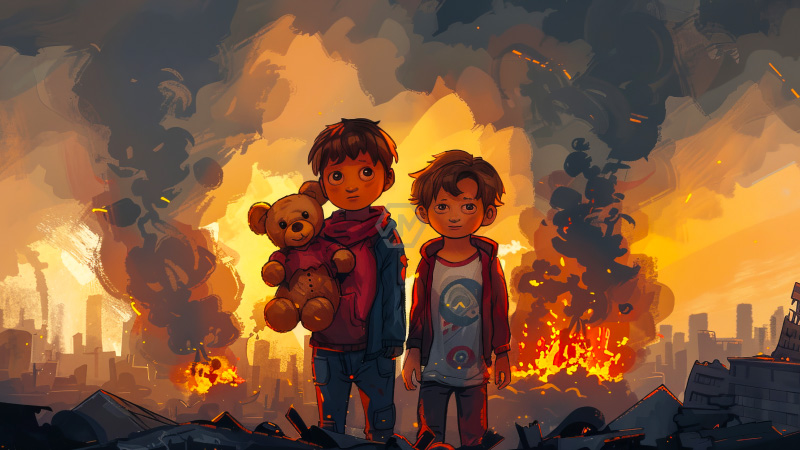- Israeli airstrikes across Gaza kill 14, with half of the casualties being children.
- High-level US-Israel talks focus on de-escalation and minimizing civilian casualties.
- The war, triggered by Hamas-led attacks on October 7, continues to devastate Gaza.
Israeli airstrikes across the Gaza Strip have claimed the lives of at least 14 people, including children and women, according to Palestinian officials.
Strikes in Gaza City and southern Gaza resulted in devastating losses, as entire families were killed in their homes. While Israel states it tries to avoid civilian casualties, the densely populated urban areas of Gaza have made it difficult to distinguish between combatants and non-combatants, leading to mounting civilian deaths.
Humanitarian Crisis Deepens in Gaza as Israeli Airstrikes Continue
Amidst the ongoing conflict, US Chairman of the Joint Chiefs of Staff, Gen CQ Brown, met with Israeli defense leaders in Tel Aviv to discuss ways to de-escalate tensions and prevent a broader conflict. Conversations centered on Israel’s security needs, regional stability, and improving humanitarian aid to Gaza. The meeting underscores the critical role of international diplomacy in managing the crisis, though the situation on the ground remains dire.
As the conflict escalates, high-level discussions between US and Israeli defense leaders aim to find ways to reduce civilian casualties and provide more humanitarian aid to the besieged Gaza Strip. The US continues to emphasize its strategic partnership with Israel, while also urging de-escalation to prevent further regional instability.
Israel maintains that its airstrikes target Hamas militants who are embedded within civilian areas, leading to tragic collateral damage. However, international pressure is mounting on Israel to reconsider its tactics, especially as the toll on Gaza’s civilian population continues to rise. Meanwhile, humanitarian organizations are struggling to provide aid under increasingly dangerous conditions.
The war, which started with Hamas-led attacks on southern Israel on October 7, shows no signs of abating. With thousands of civilians caught in the crossfire, efforts to broker a ceasefire have been unsuccessful, and the humanitarian crisis continues to worsen. The situation remains fragile, with fears of a wider regional conflict looming large.
As the conflict in Gaza intensifies, international efforts to address the humanitarian crisis and prevent further civilian casualties are increasingly urgent. Diplomatic initiatives and calls for de-escalation are critical, but the reality on the ground underscores the need for immediate action to alleviate the suffering of those trapped in the conflict zone.
“The war began when Hamas-led militants stormed into southern Israel on October 7, killing some 1,200 people, mostly civilians, and abducting around 250 people.”



